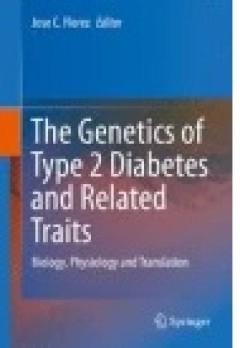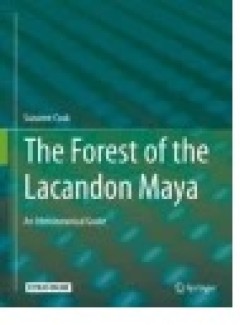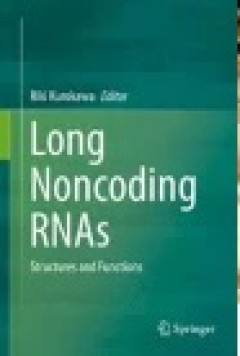Filter by

The Genetics of Type 2 Diabetes and Related Traits
The first section explores genome-wide association studies, the extension of this method to less accessible phenotypes and the arrival of next-generation sequencing. A further section goes beyond genetics to illustrate how other data sources can help interpret genetic data, such as leveraging population diversity, the correlation of genetic associations with physiological measurements, gene exp…
- Edition
- -
- ISBN/ISSN
- 978-3-319-01574-3
- Collation
- XI, 576
- Series Title
- -
- Call Number
- -

The Functional Nucleus
This book gives an in-depth overview on nuclear structure and function. It clearly shows that the epigenome and the three-dimensional organization of the nucleus are not independent properties. The intimate relationship between the location and the epigenetic modifications of gene loci is highlighted. Finally, it shows that the complex three-dimensional organization of the nucleus is not just o…
- Edition
- -
- ISBN/ISSN
- 978-3-319-38882-3
- Collation
- VI, 513
- Series Title
- -
- Call Number
- -

The Forest of the Lacandon Maya
In The Forest of the Lacandon Maya: An Ethnobotanical Guide, linguist Suzanne Cook presents a bilingual Lacandon-English ethnobotanical guide to more than 450 plants in a tripartite organization: a botanical inventory in which main entries are headed by Lacandon names followed by common English and botanical names, and which includes plant descriptions and uses; an ethnographic inventory, which…
- Edition
- -
- ISBN/ISSN
- 978-1-4614-9111-8
- Collation
- XXVII, 379
- Series Title
- -
- Call Number
- -

How Science Works: Evolution:The Nature of Science & The Science of Nature
Evolution is just a theory, isn’t it? What is a scientific theory anyway? Don’t scientists prove things? What is the difference between a fact, a hypothesis and a theory in science? How does scientific thinking differ from religious thinking? Why are most leading scientists atheists? Are science and religion compatible? Why are there so many different religious beliefs but only one science?…
- Edition
- -
- ISBN/ISSN
- 978-94-017-7747-6
- Collation
- XXI, 160
- Series Title
- -
- Call Number
- 610 ELL h

Long Noncoding RNAs: Structures and Functions
This book presents a common principle of actions of long noncoding RNAs (lncRNAs) from points of view at the atomic, molecular and cellular levels. At the atomic level, chemical studies of ribonucleic acids explain the chemical behavior of lncRNAs. Structural biological analysis of lncRNAs and its binding proteins also reveal the precise mechanisms of their actions. Molecular biological approac…
- Edition
- -
- ISBN/ISSN
- 978-4-431-55576-6
- Collation
- -
- Series Title
- -
- Call Number
- -

Long Non-coding RNAs in Human Disease
This volume focuses on the roles of long non-coding RNAs (lncRNAs) in contexts ranging from human cancers to cardiovascular disease and ageing. The role of lncRNAs in X-inactivation and those lncRNAs derived from pseudogenes, past retroelements integrated within the human genome, as well as the role these pseudogene-derived lncRNAs play in cancer development are discussed in detail. Further, th…
- Edition
- -
- ISBN/ISSN
- 978-3-319-23907-1
- Collation
- -
- Series Title
- -
- Call Number
- -

FXTAS, FXPOI, and Other Premutation Disorders
This book should serve as a resource for professionals in all fields regarding diagnosis, management, and counseling of patients with FXTAS, FXPOI and their families, as well as presenting the molecular basis for disease that may lead to the identification of new markers to predict disease risk and eventually lead to target treatments. The book will present information on all aspects of FXTA…
- Edition
- -
- ISBN/ISSN
- 978-3-319-33898-9
- Collation
- 10 b/w illustrations, 12 illustrations in colour
- Series Title
- -
- Call Number
- -

Advances in New Technology for Targeted Modification of Plant Genomes
Over the past 50 years, biotechnology has been the major driving force for increasing crop productivity. Particularly, advances in plant genetic engineering technologies have opened up vast new opportunities for plant researchers and breeders to create new crop varieties with desirable traits. Recent development of precise genome modification methods, such as targeted gene knock-out/knock-in an…
- Edition
- Ed. 1
- ISBN/ISSN
- 978-1-4939-2556-8
- Collation
- VIII, 166
- Series Title
- -
- Call Number
- 631.5233

The Conquest of Cancer
Based on 30 years of clinical and research experience, backed by a careful assessment of four decades of published data, Dr. Faguet documented in The War on Cancer (Springer 2005), early advances in cancer treatment and patient survival that soon stalled. Ten years later and after an exhaustive analysis of evidence-based data available through 2013 that incorporates 755 references, he reveals t…
- Edition
- -
- ISBN/ISSN
- 978-94-017-9165-6
- Collation
- XV, 249
- Series Title
- -
- Call Number
- -

Life Extension: Lessons from Drosophila
This book looks at aging through research on Drosophila, the fruit fly that is one of the most widely used model organisms in bio gerontology. Work in model organisms can expand the theoretical knowledge of aging: it yields valuable insight into the molecular and cellular processes that underlie aging process, and it can perhaps provide new therapeutic targets for the treatment of age-related d…
- Edition
- -
- ISBN/ISSN
- 978-3-319-18326-8
- Collation
- -
- Series Title
- -
- Call Number
- -
 Computer Science, Information & General Works
Computer Science, Information & General Works  Philosophy & Psychology
Philosophy & Psychology  Religion
Religion  Social Sciences
Social Sciences  Language
Language  Pure Science
Pure Science  Applied Sciences
Applied Sciences  Art & Recreation
Art & Recreation  Literature
Literature  History & Geography
History & Geography